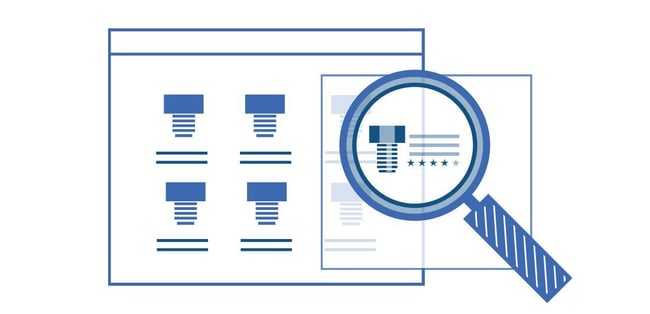What Amazon's B2B Push Means for Traditional Sales Channels
Written By: Salsify
After attending the B2B Next Conference in Chicago, it’s become abundantly clear that there is one central theme permeating the current state of B2B digital commerce: if organizations aren’t planning or currently executing a digital strategy in their B2B aligned business, then they might as well start to lock in revenue losses. In essence, organizations must embrace digital commerce, or forfeit revenue for years to come.
The everyday reality of ecommerce had, for awhile, not become the norm in more traditional B2B (Distribution, reselling and more complex professional markets) industries. With the ubiquitous reality of the everyday consumer and personal use of ecommerce sites (see the company with the “Smile”) the expectation from the professional industries is that if the brands they buy, and distribution partners they use don’t provide similar experiences, then they will look at organizations that do. The “Amazon” effect has now hit every industry.
Amazon Business, the etail giant’s professional marketplace, reached $10 Billion in B2B sales as of September 2018. While that is less than 10% of their overall revenue for 2017, those numbers should be put in very serious context with the overall realty of the shifting B2B market. Consider the fact that each of the long standing traditional Industrial distributors on average brought in $10b in revenue for the past decade. In less than a couple years, Amazon B2B has matched or eclipsed traditional distributors in specific B2B markets.
The fundamental reality that all organizations must face today is that Amazon has created an undeniable effect on the way people buy. In many ways Amazon has transformed the B2B2C experience, and because of that and their influence on the way we shop, Amazon is having a dramatic influence on the way B2B organizations are looking to search and purchase product.
Shift in Buying Habits & Expectations
As organizations look to attract younger employees and talent, those new hires are bringing an expectation that they want their personal habits to intersect with their business habits (see snacks, games, flexible work hours). With the universal way they search and buy driving the way they want to interact, traditional B2B organizations are scrambling to catch up to the demand being placed on them to be more “Amazon” like.
B2B ecommerce is expected to hit $1.2 Trillion or 13% of B2B sales by 2021. Look at that in conjunction with other statistics coming out of the B2B industry: 89% of Procurement directors surveyed in a recent B2B study are making more purchases online than 12 months ago and 8 of 10 procurement managers chose a supplier with “excellent” e-commerce and portal capability.
Eight out of those 10 same procurement managers start their product search on Google or Amazon. This data is emblematic of the new buying habits in this market.
This new reality means that in the minds of procurement and purchasing managers and your B2B customers, their first stop to look at new or current product is no longer your brand site, or your distributors, but Amazon’s and the Google search box. The need to have a comprehensive strategy to distribute and provide robust product content to your existing partners as well as post it on Amazon and to Google’s manufacturing center (even if they don’t buy there but find information missing in their normal avenues) should be if not the, but one of your top priorities going forward. Your partners (Distributors, re-sellers, brokers, and others) are catching up. Amazon is driving the conversation…how are you planning to be a part of that dialogue?
Nick Manzo, Global Accounts Team, Salsify
Nick brings over 15 years of selling and industry development experience in the global B2B and B2C market. Prior to joining Salsify, he ran Global Industry Development for 1WorldSync, speaking in conferences in over 7 countries, sitting on global Leadership teams, and providing strategic direction and planning to the largest companies in the world on the importance of product content strategy and execution.
Written by: Salsify
Salsify helps thousands of brand manufacturers, distributors, and retailers in over 140 countries collaborate to win on the digital shelf.
Recent Posts
5 Ecommerce Tips To Help Marketers Enter the New Year Stress-Free
How Many Digital Sales Channels Do Shoppers Review Before Purchasing Products?
What the Data Says About Consumer Interest in AI Shopping Agents
Subscribe to the Below the Fold Newsletter
Standing out on the digital shelf starts with access to the latest industry content. Subscribe to Below the Fold, our monthly content newsletter, and join other commerce leaders.


.svg)